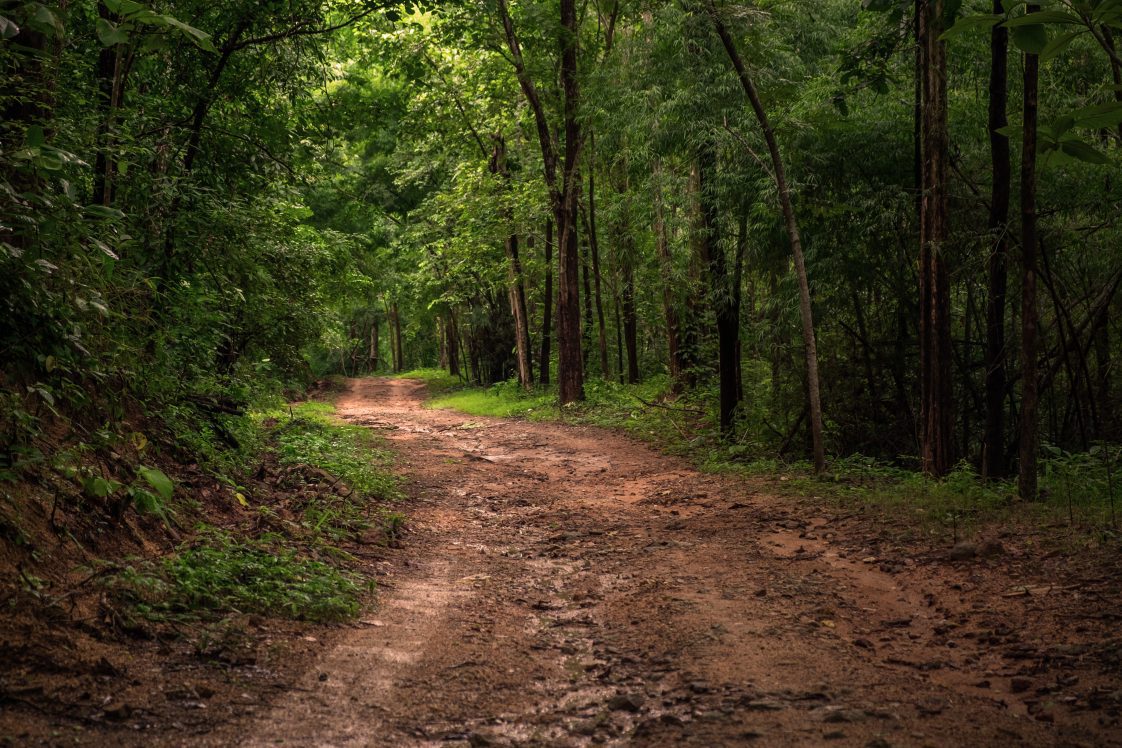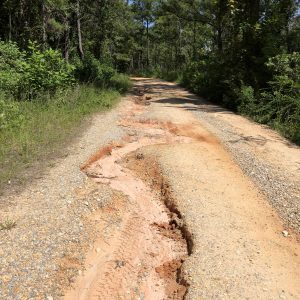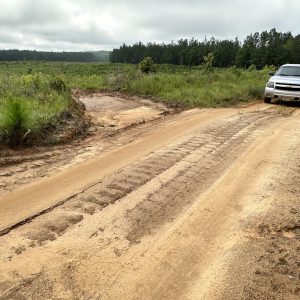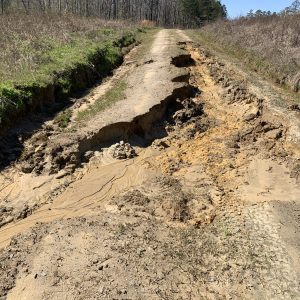Forestry

Forest roads must be maintained in order for landowners to have access throughout their property. Heavy rainfall events can wash out roads, especially if people do not maintain and clean out water diversion devices.
Water diversion devices. Devices such as water bars, turn-outs, and/or broad-based dips should be periodically assessed for their effectiveness of getting water off the road. If a road regularly washes out and there are no diversion devices in place, landowners may want to install them, as their primary focus is to slow down and divert water off the road. Getting water quickly off the road is important to having a stable forest road. It is important to install water diversion devices on steep segments of the road.
Gravel. Another practice you can use to slow water down and limit soil movement is to put gravel on steep segments or wet areas of the road. Protecting stream-crossing approaches with water diversion devices and/or gravel will help reduce erosion from reaching the stream, at which point it will become sedimentation and can impact water quality.
Ditches. Roadside ditches and ditch turn-outs should also be assessed for their effectiveness and cleaned out when needed. Never have a ditch run directly into a waterway.
Timber harvest. If you are harvesting timber, make sure you know who will be responsible for road maintenance during and after the operation.
Traffic. Limiting the amount of traffic on a forest road by installing a gate will help reduce impact—such as rutting and/or getting stuck—and causing additional erosion issues, especially during wet weather.
- Washed-out segment of a forest road that has no water diversion devices.
- Water bar and turn-out on a forest road that was installed correctly and has been maintained.
- Washed-out forest road and erosion going directly into a stream not pictured. No water diversion devices were implemented on the road.
More Information
For more information, visit www.aces.edu and search for forestry best management practices to find several Alabama Extension peer-reviewed publications that include more detailed information about forest roads, stream crossings, and timber harvesting. You can also contact Richard Cristan at rzc0067@auburn.edu for more information.




